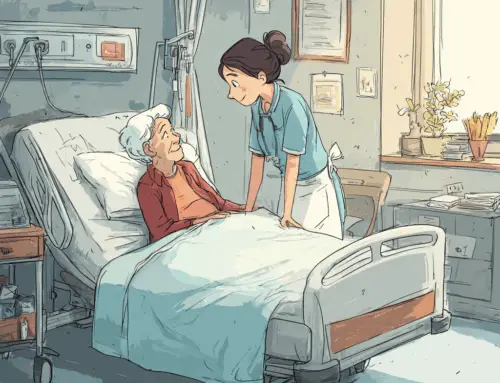
Drug and alcohol addiction can occur in any age group.
Surprisingly, drug use among baby boomers has surpassed drug use among teenagers. Boomers view toward drug use tends to be more laid back then other generations.
We will explain what you should know about drug abuse and addiction among baby boomers.
What are baby boomers?
Baby boomers are a segment of the population that was born after World War II between 1946 and 1964. Baby boomers were named such because there was a “boom” or upsurge in the number of babies born. During this period approximately 77 million babies were born in the United States. Today, they represent 30 percent of the population.
Baby boomers are unique because they are the most active, wealthiest, and most physically fit generation to date. They are considered the most excessive generation when it comes to money, clothing, food, retirement programs, and even midlife crisis products.
Drug Use in the 70s
Disco was the music of choice in the 1970s, and designer drugs were the drugs of choice.

Drug use transitioned from plant-based like marijuana to those made in chemical labs. These designer drugs also referred to as club drugs, influenced the 1970s disco scene by shifting to a preference for cocaine and Quaaludes.
The most popular recreational club drug in the 70s was Quaaludes, also called ludes and disco biscuits. They were very popular at juice bars in Manhattan, New York. Juice bars did not sell liquor but catered to customers who liked dancing while high on Quaaludes.
Drug use in the 70s also introduced the popularity of the GHB and Rohypnol date rape drugs. It is usually dropped into someone’s drink unknowingly and has a sedative effect. It affects cognitive functions. It causes confusion, amnesia, and intoxication.
The late 1970s also saw the introduction of crack cocaine. Crack cocaine is cocaine in rock form, and it is smoked instead of snorted. It is potent and addictive. It is the number one preferred version of cocaine today.
Top Drug Choices Among Baby Boomers
Last year, liquor was the most consumed substance among older people. Over 80 percent of boomers consumed it when they were 19-years-old.
The second top drug choice among boomers is marijuana. Its popularity emerged from the 1960s drug culture. Although marijuana use is very popular among young people aged 18 to 20; 50 percent of baby boomers used marijuana last year.
Baby Boomers and Drinking

With over 500,000 people between 55-years-old and 74-years-old being admitted to the emergency room for a drinking-related health condition in 2015 and 2016, alcohol abuse is the top addiction among seniors.
Baby boomers are the first generation that prefers to drink at home as opposed to drinking in a bar. One reason may be attributed to the strict drinking and driving laws that are in place today. Another reason may be the preference to drink in secret and hide it from their doctors, friends, and family.
Some side effects that older people need to be aware of include:
- Memory loss
- Confusion
- Susceptible to major illnesses
- Frequent doctor visits
- Loss of satisfaction with life including hobbies and pastimes
- Smaller social circle
Baby Boomers and Prescription Drugs
Baby boomers use painkillers to maintain pain-free and active lives, especially after surgery. More drugs are prescribed to this age group than any other population group. They consume 33 percent of all prescription drugs. Since 2014, prescription painkillers prescriptions have reached 55 million which is a 20 percent increase while anti-anxiety (benzodiazepine) medications have increased 12 percent.
One in four baby boomers take opioid or benzodiazepine medications. The common prescriptions abused are OxyContin, hydrocodone, Xanax, and Klonopin.
Substance Abuse Treatment for Baby Boomers
Approximately, three million seniors are currently suffering from substance abuse. By 2020, the number is expected to reach nine million.
Treatment rates from 1992 to 2008 were as follows:
- Prescription drugs rose by 2.8 percent
- Marijuana rose by 2.3 percent
- Heroin rose by 8.8 percent
- Cocaine increased 8.5 percent
- Drinking decreased 24.7 percent
- Multiple substances increased 26 percent
The decline in treatment for drinking is attributed to the increase in illicit drug addiction. Baby boomers tend to abuse a combination of drugs at the same time such as liquor, tranquilizers (benzodiazepines) and prescription painkillers containing opiates.
Baby Boomers Hobbies

Until 2029, approximately 10,000 baby boomers will retire every day. As baby boomers retire, they will have more time to indulge in hobbies.
It is recommended that retirees fill their days with their favorite past-times. They are less likely to turn to or increase the use of substances to fill the loneliness, boredom, and depression that may occur with retirement.
Some recommendations for baby boomers hobbies are:
- Fishing
- Gardening
- Collections-wine, stamps, coins
- Crafts – knitting, crocheting, scrapbooking
- Writing – book, article, poem, songs
- Gentle Exercise – yoga, walking, golf
- Volunteering for a cause – homelessness, domestic violence
- Community Clubs – country club, sororities, fraternities, or book club
- Continuing Education Classes – learn a new language or new musical instrument
- Online Education – investing in real estate or starting a new business
Check with your local university or community college for free or discounted classes for seniors. Many courses are available to audit or attend without earning credit.
Signs of Addiction
The signs of addiction can be easily confused with signs of aging such as loss of balance, loss of memory and lack of social interaction.
Here are some red flags to look for if you think you may have a problem:
- You continue to use a substance after the health problem has been resolved
- You experience withdrawals like depression, sweating, headaches, stomach aches, or seizures when you do not take the substance
- You need more of the substance to obtain the same effect
- You are obsessed with getting and taking the substance
- You cannot stop even though you are experiencing negative consequences (like losing your job)
- You steal or borrow money to buy the substance
- You hide your use of the substance
- You visit more doctors than needed to get prescriptions for the substance
- You receive comments and complaints from family and friends that you have changed
Between 2002 and 2013, drug abuse in adults over 50-years-old has doubled. By 2020, 5.7 million baby boomers will need treatment. It is natural for them to hide their habits and not seek advice from family, friends, and doctors.
It is never too late for baby boomers to seek treatment and live the rest of their life healthy and sober. Treatment has been proven to work.



